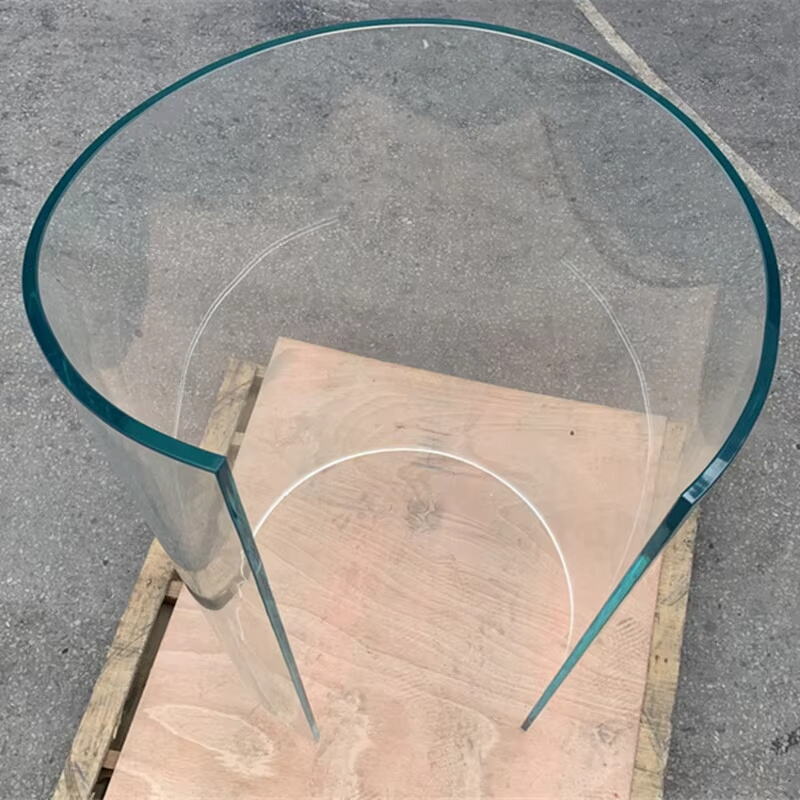Ճարտարապետական ճակատների վերափոխում կորացված ապակու միջոցով
Շենքերի արտաքին տեսքի էսթետիկ բազմակողմանիությունը
Ճարտարապետները այժմ աշխատում են հետ կորողլի գլասացուցակ ստեղծելու համար շենքեր, որոնք տեսքով ամբողջովին տարբեր են նախկինում տեսած ցանկացած բանից: Չնայած ստանդարտ ուղղանկյուն տուփերին, նրանք կարող են կառուցել հոսող ձևեր, որոնք գրեթե կենդանի են թվում: Ամենահատկանշական այն է, թե ինչպես է այս հատուկ ապակին խաղում լույսով օրվա ընթացքում: Որոշ շենքեր առավոտյան մի կերպ են արտապայտում արևը, իսկ կեսօրին ամբողջովին փոխում են իրենց տեսքը: Վկայությունը Բիլբաոյի Գուգենհայմը է՝ թեև իրականում կառուցված է հիմնականում տիտանից, ոչ թե ապակուց, սակայն ցույց է տալիս, թե ինչ է տեղի ունենում, երբ դիզայներները ազատանում են իրենց ուղիղ գծերից: Ապակու արտադրողները նաև կարող են կարգավորել տեքստուրան և թափանցիկության մակարդակները, ինչը նշանակում է, որ ճարտարապետները կարող են փորձարկել նյութերը այնպես, որ համապատասխանեն իրենց ստեղծագործական տեսլամբանին՝ միաժամանակ չհրաժարվելով գործառույթից կամ գեղեցկությունից:
Օրինակ՝ ճարտարապետները կարող են ստեղծել ձևեր, որոնք նմանակում են բնական տարրերը, ստեղծելով շենքեր, որոնք համատեղվում են իրենց շրջակա միջավայրերի հետ: Կորացված ապակու սալերի բազմակի կիրառությունը նշանակում է, որ դիզայներները կարող են փորձարկել տարբեր եզրափակումներ և գունային տարբերակներ, որը բարելավում է ճարտարապետական ճակատների տեսքը և գործառնական առավելությունները:
Энергетическая эффективность и солнечная производительность
Բավականաչափ կարևոր է կորացված ապակին, երբ խոսքը սկսվում է այն մասին, թե ինչքան լավ են շենքերը աշխատում արեւային էներգիայի տեսքով: Այն արդյունավետ է աշխատում արեւի լույսը ներսում բերելու գործում, իսկ այդ միջոցով նվազեցնում է ցանկարժան փայլը, ինչը հնարավորություն է տալիս էներգիան խնայել: Երբ ապակիներին ավելացվում են հատուկ ծածկույթներ և գունավորում, դրանք արդյունավետ են աշխատում ներքին ջերմաստիճանները կայուն պահելու գործում, ինչի շնորհիվ էլ ավելի քիչ էներգիա է օգտագործվում տաքացման կամ օդի սառեցման համար: Շատ արդի շենքեր, որտեղ օգտագործվել է կորացված ապակի, ցույց են տվել, որ դրանք կարող են մեծապես նպաստել էներգախնայողական աշխատանքին, երբեմն նույնիսկ ստանալով LEED սերտիֆիկատներ իրենց հնարամիտ նախագծերի շնորհիվ: Կորացված ապակիների տեղադրման անկյունների ճիշտ հաշվարկը շատ կարևոր է արեւային արդյունավետության առավելագույն ցուցանիշների հասնելու համար: Հենց այդ պատճառով էլ ավելի շատ ճարտարապետներ, ովքեր կապված են կանաչ շինարարության հետ, այսօր դիմում են կորացված ապակիների լուծումներին:
Ուսումնասիրությունները հաստատում են, որ այս էներգախնայող դիզայնները նպաստում են էներգիայի սպառման արժեքների կրճատմանը՝ միևնույն ժամանակ խրախուսելով էկոլոգիապես մաքուր մեթոդները շինարարության մեջ: Վերջապես, կորացված ապակիների կիրառումը խելացի ընտրություն է, որը հավասարակշռում է էսթետիկան և կայունությունը՝ բավարարելով ժամանակակից ճարտարապետական պահանջները:
Բնական լույսի բարելավումը կորացված ապակու տանիքապատումներով
Ատրիումների և տանիքների համար նորարական դիզայններ
Կորացված ապակե սալերը խաղը փոխում են ատրիումների և տանիքի տարածքների դեպքում՝ դրանք վերածելով բնական լույսով լցված և գունավոր տարածքների, որոնք մարդկանց ներքին հոգեբանական վիճակը բարելավում են: Այս տեսակի ապակին շատ հետաքրքիր է դիզայնի տեսանկյունից, քանի որ ճարտարապետները կարող են սալերը ձևավորել տարբեր եղանակներով՝ համապատասխանեցնելով ամբողջ շենքի տեսքին: Վերջերս ճարտարապետական ընկերությունների մեծ մասն սկսել է օգտագործել այս տեսակի սալեր, քանի որ դրանք շատ հատկանշական են: Գիտական հետազոտություններ են կատարվել, որոնց արդյունքները ցույց են տվել, որ բնական լույսի առկայությունը բարձրացնում է արտադրողականությունը: Ինչպես նաև ավտոմատ ստվերային համակարգերի միացումը հիանալի արդյունք է տալիս էներգիայի օգտագործման վերահսկման և ջերմաստիճանի կայունության ամբողջ տարվա ընթացքում: Այս համադրությունը ներկայացնում է հարթակ, որտեղ համատեղվում են էսթետիկան և գործառնականությունը ժամանակակից ճարտարապետական նախագծերի հիմքում՝ չթույլատրելով որևէ կողմի վատթարացում:
Առևտրային տարածքներում ցերեկային լույսի առավելագույն օգտագործումը
Երբ առևտրային շենքերը օգտագործում են կորացված ապակու դիզայներ, դա թույլ է տալիս ավելի շատ բնական լույս ներս թափանցի, ինչը կրճատում է ներքին տարածքներում արհեստական լուսավորության կարիքը: Ուսումնասիրությունները ցույց են տվել, որ լավ լուսավորված տարածքներում աշխատող մարդիկ ավելի արտադրողական են և ընդհանրապես ավելի բավարարված են իրենց աշխատանքով: Ճարտարապետները հիմա հաճախ դիմում են հատուկ ծրագրային ապահովման օրվա լույսի վերլուծության համար նախագծման փուլում: Սա նրանց օգնում է տեսնել, թե ինչպես կանցնի լույսը շենքի տարբեր տարբերակներով կառուցումը սկսելուց առաջ: Կյանքի օրինակները այս մոտեցումը հաստատում են. շատ ըմբռնումներ, որոնք ունեն այդպիսի ապակու հատկանիշներ, փող են խնայում էլեկտրաէներգիայի հաշիվների վրա: Սա ամեն ինչ միայն գեղեցկություն չէ, այդ տարածքները ավելի հարմար են դառնում, երբ առկա է բավարար արևային լույս, ինչի շնորհիվ ըմբռնումները փող են խնայում և ավելի բարեկարգ են լինում միջավայրի նկատմամբ:
Կորացված ապակին ժամանակակից ներքին դիզայնում
Շարժական մասնատման պատեր և բաժանիչներ
Վերջերս կորացված ապակեպատերը շատ ճանաչում են ձեռք բերել ժամանակակից ներքին տարածքների դիզայնում: Դրանք միավորում են ոճը և բաց տարածքները՝ սենյակների ընդհանուր տպավորությունն ամբողջովին փոխելով: Այդ կորացված պատերի գեղեցկությունն այն է, որ դրանք թույլ են տալիս լույսը ազատ անցնի և տեսողական կապ ստեղծի տարածքների միջև, միևնույն ժամանակ պահպանելով մասնավոր տարածքների մատչելիությունը: Հենց այդ պատճառով էլ այսօր շատ գրասենյակներ և տներ օգտագործում են դրանք, հատկապես այն դեպքերում, երբ նպատակն է մարդկանց ավելի ազատ հաղորդակցվելու հնարավորություն տալը: Ներքին տարածքների դիզայներները սիրում են աշխատել այս նյութի հետ, քանի որ այն համատեղելի է մյուս տարրերի հետ: Կորացված ապակու կողքին փայտի ակցենտները տաքություն են ավելացնում, իսկ մետաղները ստեղծում են հակադրություններ: Բացի այդ, ապակու արտադրության մեջ տեղի ունեցած առաջընթացները նշանակում են, որ այդ պատերը ոչ միայն գեղեցիկ են, այլ նաև կառուցվածքային առումով ամուր են: Եվ իհարկե, դրանք բավականին լավ են ապահովում ձայնի մարումը, ինչը զգալի ազդեցություն է թողնում մարդկանց մեջ ամենօրյա զբաղված միջավայրերում:
Քանդակային աստիճաններ և բալուստրադներ
Շրջադարձային ապակե սանդուղքները հիմա շատ հաճախ են հանդիպում ժամանակակից ճարտարապետության մեջ, որտեղ համատեղվում է արվեստը և գործնականությունը։ Այդ ապակե սանդուղքները տարածքում տեղադրված լինելով իրենց հետ են գրավում ուշադրությունը և իրենց տեսքով հիշեցնում են քանդակների մասեր։ clear glass բացատրական ամբարձիչները թույլ են տալիս տեսնել նրանց միջով, ինչը ավելի անվտանգ է դարձնում շարժումը, բայց չեն խոչընդոտում տեսանելիությանը դեպի դուրս և տարածքի մյուս մասերը։ Շատ դիզայներներ հիմա ավելացնում են LED լույսեր եզրերի երկայնքով։ Գիշերը լուսավորված սանդուղքները ստեղծում են ազդեցիկ տեսողական էֆեկտներ, որոնք փոխում են ամբողջ տարածքի մթնոլորտը։ Արտադրողները վերջերս մեծ առաջընթաց են գրանցել, որն իրավաստեղադրում է շինարարներին ստեղծել տարբեր ձևավորումներ պահպանելով կոնստրուկտիվ ամրությունը և համապատասխանելով շինարարական կանոններին։
Ավելի մանրամասն տեղեկությունների համար ստուգեք ապրանքների նկարագրությունները և նկարները հետևյալում Կորողլի գլասացուցակ .

Կոնստրուկտիվ Նորամուծություններ Բացվող Ապակու Օգտագործմամբ
Լարված Ապակե Պատեր և Արտային Ծածկեր
Բացարձակ ապակեպատերը, որոնք իրականում ամրացնում են շենքերը, փոխում են ճարտարապետների տարածքի և լույսի մասին մտածելու եղանակը: Ավանդական պատերի փոխարեն այս ժամանակակից կառուցվածքները թույլ են տալիս ավելի շատ բնական լույս ներսում, միևնույն ժամանակ պահպանելով ամրությունը: Նրանք հիանալի աշխատում են ինչպես գրասենյակային տարածքների, այնպես էլ տների համար, որտեղ մարդիկ ցանկանում են ստանալ այդ բաց զգացումը՝ առանց աջակցությունից հրաժարվելու: Նրանց հետ կապված ճարտարագիտությունն էլ բավականի տպավորիչ է, քանի որ նրանք կարողանում են կրել լուրջ ծանրաքաշ բեռներ, նույնիսկ եթե այնպես թվային նուրբ տեսք ունեն: Մենք տեսել ենք, որ այս տեխնոլոգիան օգտագործվել է աշխարհի շատ երկրներում գտնվող մի քանի երկնաքեր շենքերում, ինչը ցույց է տալիս, թե ինչքան դիմացկուն և ճկուն են իրոք այս ապակեպատերը: Դրանք հատկապես հետաքրքիր են իրենց կորացման և ձևավորման հնարավորությամբ՝ ինչպես օրինակ մուտքերի կամ անցուղիների վրա տեղադրված սավանները: Այս կորացված ապակե կառուցվածքները պաշտպանում են անձրևից և արևից, սակայն թույլ են տալիս համապատասխան տեսանելիություն: Ճարտարապետները սիրում են աշխատել այս նյութի հետ, քանի որ այն նրանց թույլ է տալիս ստեղծել այնպիսի դիզայներ, որոնք հիանալի են տեսքով և միևնույն ժամանակ գործնական արդյունքներ են տալիս:
Թափանցիկ սյուների համակարգեր
Ճարտարապետները սկսել են կորացված ապակին դիտել ոչ միայն որպես զարդ, այլ նաև որպես լուրջ շինարարական նյութ, հատկապես այն դեպքերում, երբ այն օգտագործվում է այդ տեսանելի սյուների համակարգերում: Արդյունքը՝ շենքեր, որոնք հիանալի են նայում, միևնույն ժամանակ ամեն ինչ պահում են: Այսօր ապակե սյուները այլևս միայն գեղեցկությամբ չեն աչքի ընկնում: Դրանք իրական աշխարհի լարվածության փորձարկումներին են դիմանում ավելի լավ, քան շատերը սպասում են: Արտադրողները շատ լավ են տիրապետում ապակու կտորների ձևավորման և միացման տեխնիկային, ուստի այդ սյուները գործնական շինարարության մեջ կիրառվում են: Սակայն դրանց հատուկ դարձնող բանը այն է, թե ինչպես են դրանք թույլ տալիս արևի լույսին ցատկել շենքերի ներսում: Տարածքները ավելի լուսավոր և բաց են թվում, քանի որ լույսը տարածվում է, այլ ոչ թե հարվածում է ուղիղ պատերին: Այն մարդկանց համար, ովքեր նախագծում են առևտրային տարածքներ կամ լքուր տներ, կորացված ապակե սյուների ներառումը նշանակում է միաժամանակ ստանալ թե թափանցիկությունը, թե ուժը: Բացի այդ, ով է ցանկանում, որ իր շենքը նման լինի սովորական բետոնե և պողպատե տեսքին:
Կայունություն և բարդ ապակու կիրառումներ
Ջերմային մեկուսացում և վերամշակված նյութեր
Բարդ ապակու դիզայները հիմա արդեն ունեն բավականին հզոր ջերմային մեկուսացման տեխնոլոգիաներ, որոնք ներդրված են կառուցվածքների մեջ և ամբողջապես բերում են շենքերի էներգաարդյունավետությանը: Այստեղ մեծ առավելությունն այն է, որ այդ կառուցվածքներում արհեստական տաքացման և սառեցման համակարգերի կարիքը քիչ է, ուստի դա մեզ մոտեցնում է ավելի կայուն ճարտարապետությանը: Վերցրեք, օրինակ, արտադրության կողմը: Երբ ընկերությունները սկսում են օգտագործել վերամշակված նյութեր բարդ ապակին արտադրելու համար, նրանք ևս իրենց մասը ներդնում են միջավայրի պահպանման գործում: Ըստ ArchDaily-ի հրապարակած հետազոտությունների, շենքերը, որոնց բարձր կատարողական բարդ ապակիներ են օգտագործվում, իրականում զգալիորեն կրճատում են տաքացման և սառեցման ծախսերը: Դա ցույց է տալիս, թե որքան արդյունավետ է այդ նյութը էներգիա խնայելու գործում: Քանի որ ավելի շատ մարդիկ հարց են տալիս ավելի կանաչ շենքերի մասին, արտադրողները նույնպես գտնում են ճանապարհներ բարդ ապակին կայուն եղանակով արտադրելու համար, ինչը իմաստ ունի, եթե ցանկանում ենք, որ մեր քաղաքները լինեն և՛ գեղեցիկ, և՛ միջավայրի նկատմամբ պատասխանատու:
Կանաչ շենքերի սերտիֆիկացիա
Բացվածքավոր ապակին ճարտարապետական դիզայնում դարձել է խաղի փոփոխող գործոն, առաջարկելով ինչպես տեսողական ոճ, այնպես էլ օգնելով շենքերին ստանալ այդպիսի ցանկալի կանաչ վկայագրերը, ինչպիսիք են LEED-ը և BREEAM-ը: Երբ ճարտարապետները ներառում են այս տեսակի ապակիներ իրենց դիզայներում, նրանք կարողանում են մեծապես կրճատել ածխածնի արտանետումները՝ միևնույն ժամանակ ներքին տարածքները դարձնելով ավելի հարմար բնակողների համար: Ավելի և ավելի շատ դիզայներներ անցնում են բացվածքավոր ապակիներին կայուն զարգացման պատճառներով: Դիտեք որոշ վերջին նախագծեր, որոնք հրապարակվել են ArchDaily-ում, որտեղ մի քանի շենքեր բարձր կանաչ վարկանիշների են հասել շնորհիվ բացվածքավոր ապակու տարրերի ստեղծագործական կիրառմանը նրանց կառուցվածքներում: Այս վկայագրերը շատ կարևոր են այսօրվա շինարարական աշխարհում, քանի որ դրանք ճարտարապետներին ստիպում են մտածել, թե ինչպես է նրանց աշխատանքը ազդում միջավայրի վրա՝ առանց վնասելու գեղեցկությունը և կառուցվածքային ամրությունը:
Շրջանակաձև ապակու տեխնոլոգիական առաջընթաց
Հարմար ապակու ինտեգրումը հարմարեցված ֆասադների համար
Բացահայտում ենք իրական աշխարհի օրինակներ, որտեղ շենքերը, որոնք հագեցած են խելացի ապակու հետ, իրենց էլեկտրական հաշիվները մեծապես կրճատել են: Ապագայում փորձագետները կանխատեսում են խելացի ապակու տեխնոլոգիաների անընդհատ բարելավումներ, որոնք այդ կորացված կիրառություններին ավելի շատ էկոլոգիապես մաքուր և գործառնային կդարձնեն ժամանակի ընթացքում: Քանի որ շրջակա միջավայրի նկատմամբ հոգատարությունը աճում է, այս տեսակի նորամուծությունն ավելի շատ գրավիչ է դառնում ճարտարապետների համար, ովքեր ձգտում են կառուցել հաստատուն կառուցվածքներ առանց վնասելու ոճը և արդյունավետությունը: Խելացի ապակու տեխնոլոգիան կորացված ապակու ճակատներին ավելացնելը փոխում է ճարտարապետների կառուցապատման մտածելու եղանակը: Այս հարմարվող համակարգերը թույլ են տալիս կառուցվածքներին ավտոմատ ճանապարհով հարմարվել լույսի մակարդակներին և ջերմաստիճանի փոփոխություններին: Ինչ որ արդյունքում ստացվում է՝ ավելի լավ էներգաարդյունավետություն, մինչև ապահովվում է հարմար պայմաններ շենքի ներսում մնալու համար, անկախ նրանից, թե ինչ եղանակ է տիրում դրսում:
Ինքնամաքրող և անդրադարձնող ծածկույթներ
Բացված ապակու վրա նոր լիցքավորման տեխնոլոգիաների զարգացումը հնարավոր է դարձնում ինքնամաքրման մակերեսների ստեղծումը, ինչը նվազեցնում է սպասարկման աշխատանքները և ամբողջական ապակե կառուցվածքների կյանքի տևողությունը: Այսօրվա շուկայում հասանելի հակաարտացոլորտային լիցքավորումները իրոք բարելավում են ապակու տեսքի պարզությունը, նվազեցնելով անհարմար փայլը և ապահովելով ավելի լավ տեսանելիություն: Որոշ հետազոտություններ ցույց են տվել, որ գրասենյակային շենքերը, որոնք օգտագործում են այս տեսակի լիցքավորումները, պատուհանների մաքրման վրա ծախսում են մոտ 30%-ով քիչ, քան սովորական ապակին: Ճարտարապետներն ու շենքերի սեփականատերերը ավելի շատ են դիմում այս առաջադեմ լիցքավորումներին, քանի որ ցանկանում են նյութեր, որոնք դիմանում են եղանակի և ժամանակի հարցերին առանց մշտական սպասարկման: Քաղաքները շարունակում են դեպի ավելի կանաչ դիզայներների ձգտումը, իսկ արտադրողները շարունակում են բանաձևերի կատարելագործումը՝ ավելի լավ հարմարեցնելով ամեն ինչ երկարահարկ շենքերից մինչև բնակելի համալիրներ, որտեղ կարևոր դեր է խաղում կորացված ապակին:
FAQ բաժին
Ի՞նչ է թեք ապակին և ինչպե՞ս է օգտագործվում ճարտարապետության մեջ:
Թեք ապակին շինարարական մի բազմակի նյութ է, որը թույլ է տալիս ճարտարապետներին ստեղծել հեղուկ և օրգանական ձևեր, փոխարկել շենքերի ճակատները, օպտիմալացնել արևային արդյունավետությունը և բարելավել ներքին տարածքները:
Ինչպե՞ս է թեք ապակին նպաստում էներգահամարժեքությանը:
Բարձրացված ապակին բարելավում է էներգաօգտագործման արդյունավետությունը՝ արևի շողերը ներսում ուղղելով, նվազագույնի հասցնելով փայլը, օպտիմալացնելով ջերմաստիճանի կարգավորումը և ներառելով առաջադեմ ծածկույթներ լավ ջերմային կառավարման համար:
Ինչու՞ է բարձրացված ապակուց պատրաստված լուսամուտները օգտակար ճարտարապետական դիզայնի համար:
Բարձրացված ապակուց պատրաստված լուսամուտները բարելավում են տարածքները բնական լույսով, բարելավում են բնակողների բարեկեցությունը և առաջարկում են հատուկ դիզայներական տարբերակներ ճարտարապետական էսթետիկայի համար:
Արդյո՞ք բարձրացված ապակու տեխնոլոգիան կարող է ինտեգրել խելացի ֆունկցիոնալություններ:
Այո, բարձրացված ապակու տեխնոլոգիան կարող է ինտեգրել խելացի ֆունկցիոնալություններ, ինչպես օրինակ՝ հարմարեցված ճակատները և ինքնամաքրման ծածկույթները, որոնք բարելավում են էներգաարդյունավետությունը և պահպանման հեշտությունը:
Ո՞ր մարտահանդեսներն են կապված բարձրացված ապակու տեղադրման հետ:
Դժվարացնում են մասնագիտացված աշխատանքային ունակությունների և սարքարանների պահանջները, որոնք պահանջում են համապատասխան վկայականներ և ուսուցում տեղադրողների համար՝ համոզվելու համար, որ իրականացումը հաջող է:
Բովանդակության աղյուսակ
- Ճարտարապետական ճակատների վերափոխում կորացված ապակու միջոցով
- Բնական լույսի բարելավումը կորացված ապակու տանիքապատումներով
- Կորացված ապակին ժամանակակից ներքին դիզայնում
- Կոնստրուկտիվ Նորամուծություններ Բացվող Ապակու Օգտագործմամբ
- Կայունություն և բարդ ապակու կիրառումներ
- Շրջանակաձև ապակու տեխնոլոգիական առաջընթաց
-
FAQ բաժին
- Ի՞նչ է թեք ապակին և ինչպե՞ս է օգտագործվում ճարտարապետության մեջ:
- Ինչպե՞ս է թեք ապակին նպաստում էներգահամարժեքությանը:
- Ինչու՞ է բարձրացված ապակուց պատրաստված լուսամուտները օգտակար ճարտարապետական դիզայնի համար:
- Արդյո՞ք բարձրացված ապակու տեխնոլոգիան կարող է ինտեգրել խելացի ֆունկցիոնալություններ:
- Ո՞ր մարտահանդեսներն են կապված բարձրացված ապակու տեղադրման հետ:


